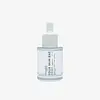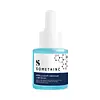What's inside
What's inside
 Key Ingredients
Key Ingredients

 Benefits
Benefits

 Concerns
Concerns

No concerns
 Ingredients Side-by-side
Ingredients Side-by-side

Onsen-Sui
Water
Skin ConditioningButylene Glycol
HumectantDipropylene Glycol
HumectantGlycereth-26
HumectantMethyl Gluceth-20
HumectantPentylene Glycol
Skin ConditioningPanthenol
Skin ConditioningChondrus Crispus Extract
Skin ConditioningGlucose
HumectantChlorella Vulgaris Extract
Skin ConditioningC12-14 Pareth-12
EmulsifyingSaccharum Officinarum Extract
MoisturisingFructose
HumectantFructooligosaccharides
HumectantCaprylyl Glycol
EmollientCarbomer
Emulsion StabilisingAmmonium Acryloyldimethyltaurate/Vp Copolymer
Tromethamine
BufferingSodium Hyaluronate
HumectantAdenosine
Skin ConditioningEthylhexylglycerin
Skin ConditioningHyaluronic Acid
HumectantSodium Phytate
Plumeria Alba Flower Oil
Hydrolyzed Hyaluronic Acid
HumectantHydroxypropyltrimonium Hyaluronate
Hydrolyzed Sodium Hyaluronate
Skin ConditioningSodium Acetylated Hyaluronate
HumectantPEG-9 Diglycidyl Ether/Sodium Hyaluronate Crosspolymer
Skin ConditioningPotassium Hyaluronate
Skin ConditioningPropanediol
SolventTocopherol
AntioxidantDimethylsilanol Hyaluronate
HumectantSodium Benzoate
Masking1,2-Hexanediol
Skin ConditioningOnsen-Sui, Water, Butylene Glycol, Dipropylene Glycol, Glycereth-26, Methyl Gluceth-20, Pentylene Glycol, Panthenol, Chondrus Crispus Extract, Glucose, Chlorella Vulgaris Extract, C12-14 Pareth-12, Saccharum Officinarum Extract, Fructose, Fructooligosaccharides, Caprylyl Glycol, Carbomer, Ammonium Acryloyldimethyltaurate/Vp Copolymer, Tromethamine, Sodium Hyaluronate, Adenosine, Ethylhexylglycerin, Hyaluronic Acid, Sodium Phytate, Plumeria Alba Flower Oil, Hydrolyzed Hyaluronic Acid, Hydroxypropyltrimonium Hyaluronate, Hydrolyzed Sodium Hyaluronate, Sodium Acetylated Hyaluronate, PEG-9 Diglycidyl Ether/Sodium Hyaluronate Crosspolymer, Potassium Hyaluronate, Propanediol, Tocopherol, Dimethylsilanol Hyaluronate, Sodium Benzoate, 1,2-Hexanediol
 Reviews
Reviews

Ingredients Explained
These ingredients are found in both products.
Ingredients higher up in an ingredient list are typically present in a larger amount.
Butylene Glycol (or BG) is used within cosmetic products for a few different reasons:
Overall, Butylene Glycol is a safe and well-rounded ingredient that works well with other ingredients.
Though this ingredient works well with most skin types, some people with sensitive skin may experience a reaction such as allergic rashes, closed comedones, or itchiness.
Learn more about Butylene GlycolHyaluronic acid is naturally found in healthy skin. It is a humectant, meaning it draws moisture to your skin.
This ingredient helps hydrate, soothe, and protect the skin.
What makes hyaluronic acid so hydrating? It has the capacity to bind or hold large amounts of water.
Fun fact: It is already naturally found in our bodies, such as the fluids of our eyes and our joints.
Studies find this ingredient to have anti-inflammatory and anti-microbial properties. This can help speed up wound-healing.
Hyaluronic acid can be irritating if the molecule has a low-molecular weight, or if the molecules are small.
One study found low-molecular weight hyaluronic acid to be pro-inflammatory, meaning some people may experience irritation. This is because our bodies use hyaluronic acid in the wound-healing process to signal to our bodies, via irritation, that something needs healing.
The same study found high-molecular weight hyaluronic acid to be anti-inflammatory.
These are some other common types of Hyaluronic Acid:
Learn more about Hyaluronic AcidSodium Benzoate is a preservative. It's used in both cosmetic and food products to inhibit the growth of mold and bacteria. It is typically produced synthetically.
Both the US FDA and EU Health Committee have approved the use of sodium benzoate. In the US, levels of 0.1% (of the total product) are allowed.
Sodium benzoate works as a preservative by inhibiting the growth of bacteria inside of cells. It prevents the cell from fermenting a type of sugar using an enzyme called phosphofructokinase.
It is the salt of benzoic acid. Foods containing sodium benzoate include soda, salad dressings, condiments, fruit juices, wines, and snack foods.
Studies for using ascorbic acid and sodium benzoate in cosmetics are lacking, especially in skincare routines with multiple steps.
We always recommend speaking with a professional, such as a dermatologist, if you have any concerns.
Learn more about Sodium BenzoateWater. It's the most common cosmetic ingredient of all. You'll usually see it at the top of ingredient lists, meaning that it makes up the largest part of the product.
So why is it so popular? Water most often acts as a solvent - this means that it helps dissolve other ingredients into the formulation.
You'll also recognize water as that liquid we all need to stay alive. If you see this, drink a glass of water. Stay hydrated!
Learn more about Water